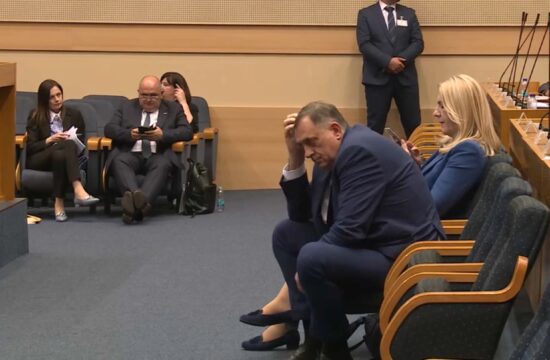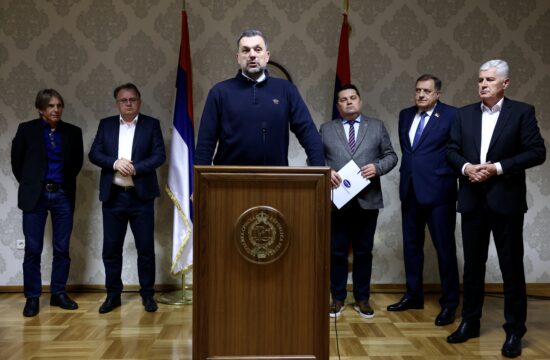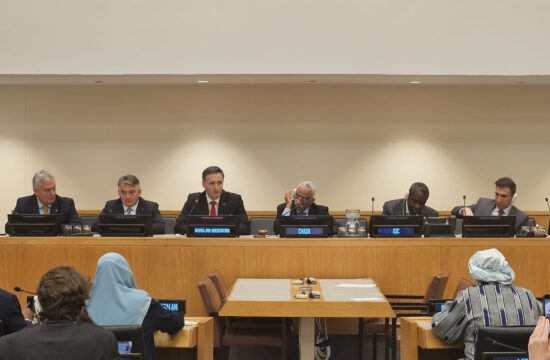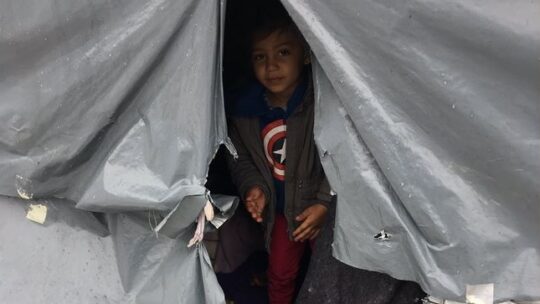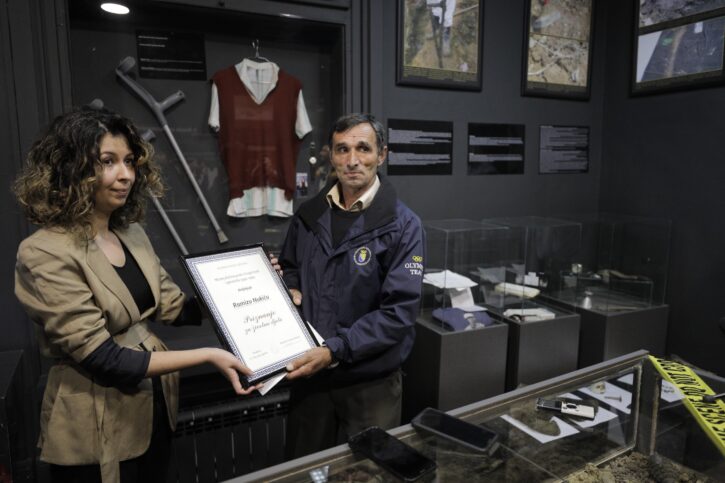
Ramiz Nukic, known as the "Bone collector' from the Eastern-Bosnian village of Kamenica, received a lifetime award from the Genocide Museum in Sarajevo, and signed an employment contract with them, after bringing in new items that belonged to the Srebrenica genocide victims.
“Today I brought some items I found. I'll try to find some more. There are the items that belonged to the Srebrenica victims – shoes made out of tarp, a hat and some other things,” Nukic said.
For the past 15 years, Nukic has been gathering bones of Srebrenica residents, killed in July 1995, when Bosnian Serb forces entered the town killing over 8,000 men and boys from the region. The bones Nukic found belonged to the victims who attempted to flee from Serb forces.
He returned to his home village in the year 2000, ever since he found 260 mortal remains of the killed civilians.
Marking the Day of Museums, Nukic delivered a pair of shoes, a comb, a razor and a hat.
One of the founders of the Museum Of Crimes Against Humanity And Genocide 1992-1995, Suada Nozic, handed Nukic the lifetime achievement award on Museum's behalf.
“The Museum is home to dozens of items Ramiz found. These are personal items which belonged to the victims, killed in July 1995 in Srebrenica. Today he brought new ones which he found recently,” she said.
She recalled that Nukic has been doing the State's job, voluntarily. With the signing of the employment contract with Nukic, they want to incentivise others in helping him on his quest.
“Despite finding over 250 mortal remains and personal items, he was forgotten by everyone and let to fend for himself,” Nozic said.
Every day, Nukic walks the forests around his house. After returning to the Podrinje region, he tried to find his brothers and father.
“I couldn't find them. They were discovered at another location. Then I decided to look for the bones scattered around the forest and streams and help the families and the Institute for Research of Crimes Against Humanity and International Law from Sarajevo. So far I found some 250-260 mortal remains,” Nukic said.
He said he knows what it is like to live in constant expectation of news of the discovery of some mortal remains of loved ones, adding that every bone he finds is precious to him.
In April 1993, the UN had declared the besieged enclave of the eastern Bosnian town of Srebrenica a safe area under UN protection.
However, in July 1995, the Dutch battalion soldiers failed to prevent the town's capture by the Bosnian Serb forces and the massacre that followed.
More than 8,000 Bosniak men and boys were killed in the days following July 11, 1995, and so far the remains of more than 6,600 have been found and buried.
Two international courts, The International Criminal Tribunal for the Former Yugoslavia (ICTY) and the International Court of Justice (ICJ) later ruled that the massacre was an act of genocide. International and regional courts have sentenced 45 people for what happened in Srebrenica to a total of more than 700 years behind bars.

